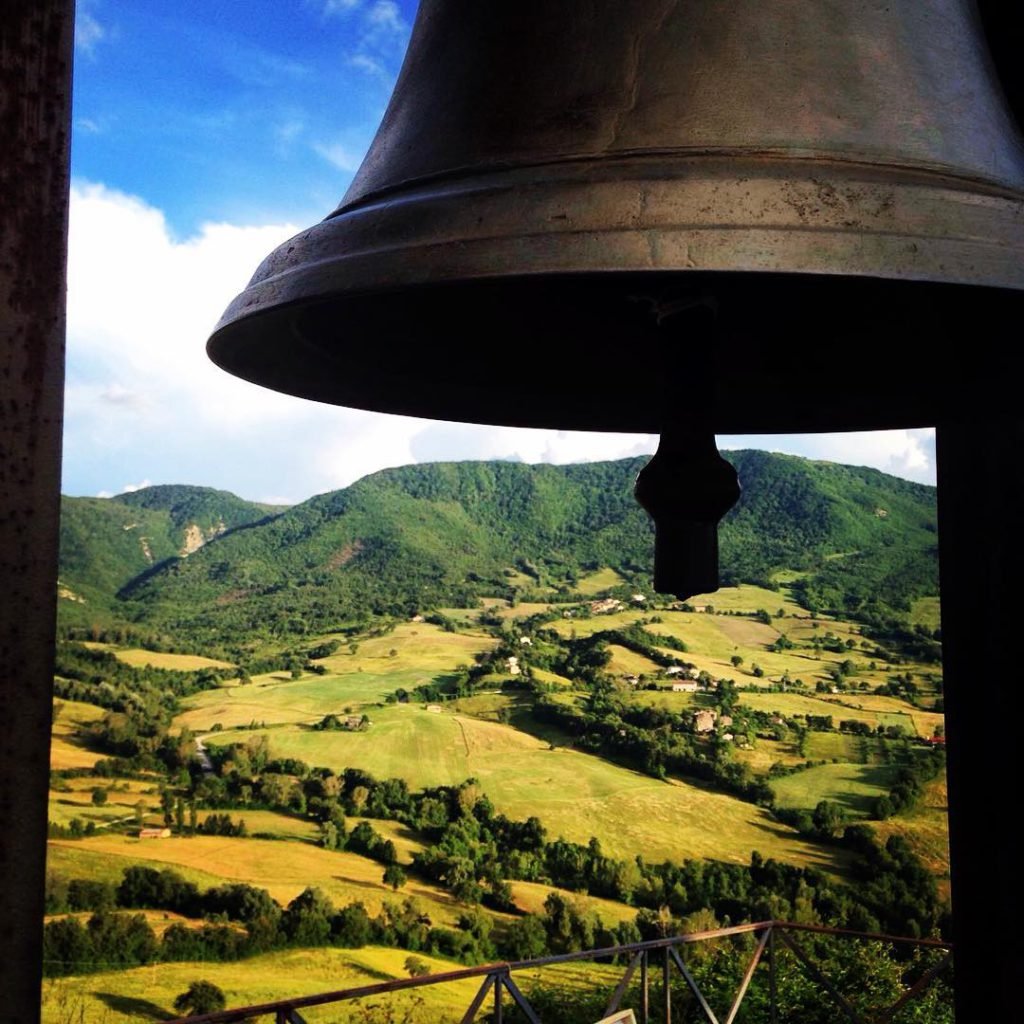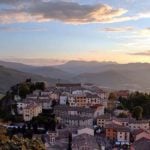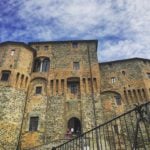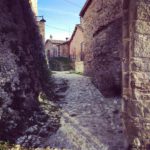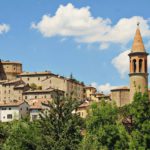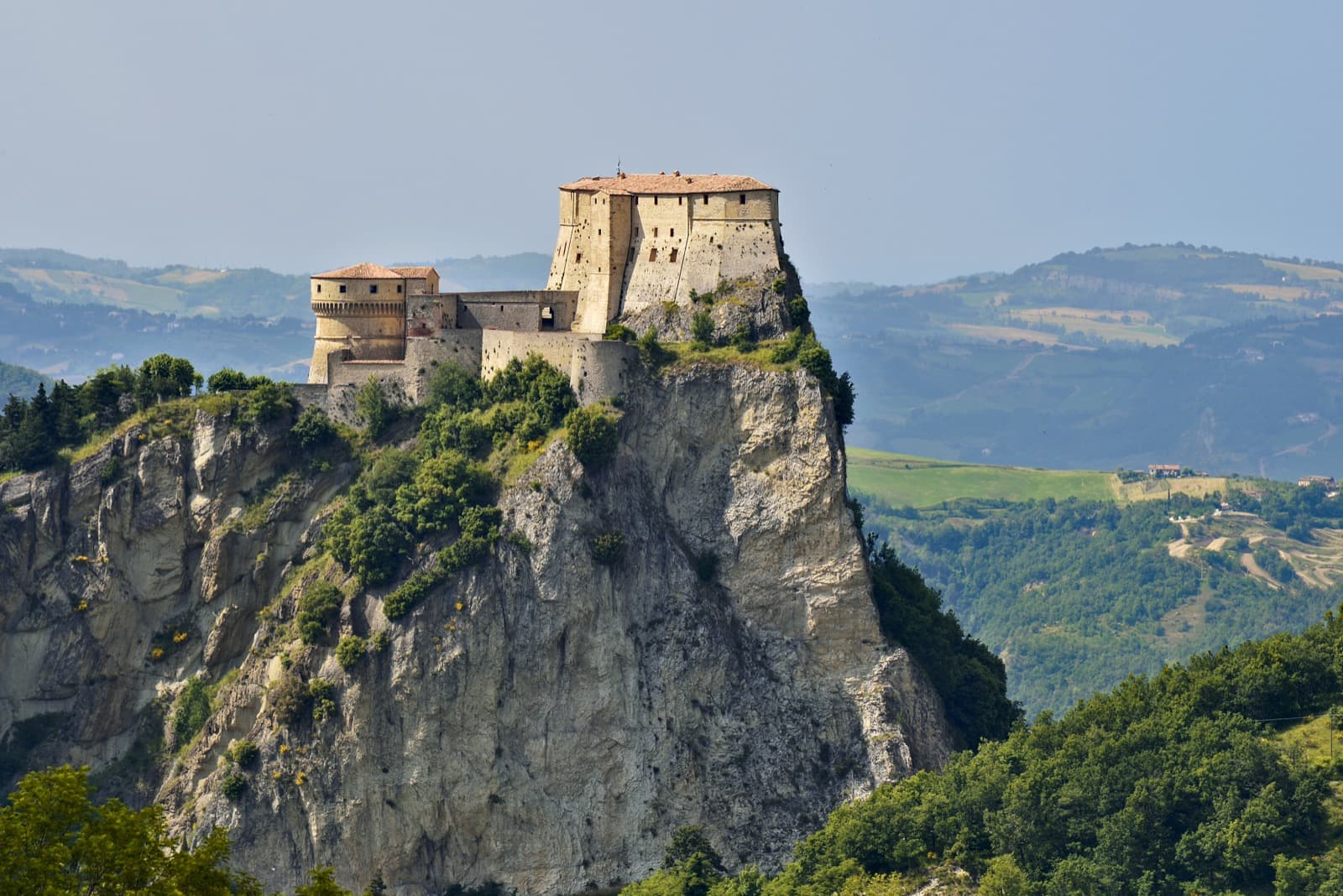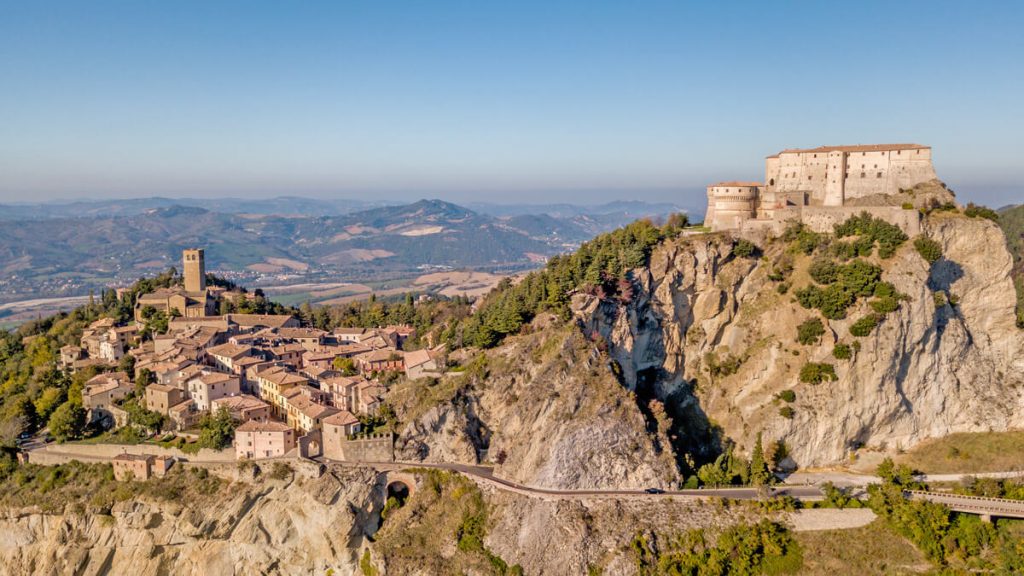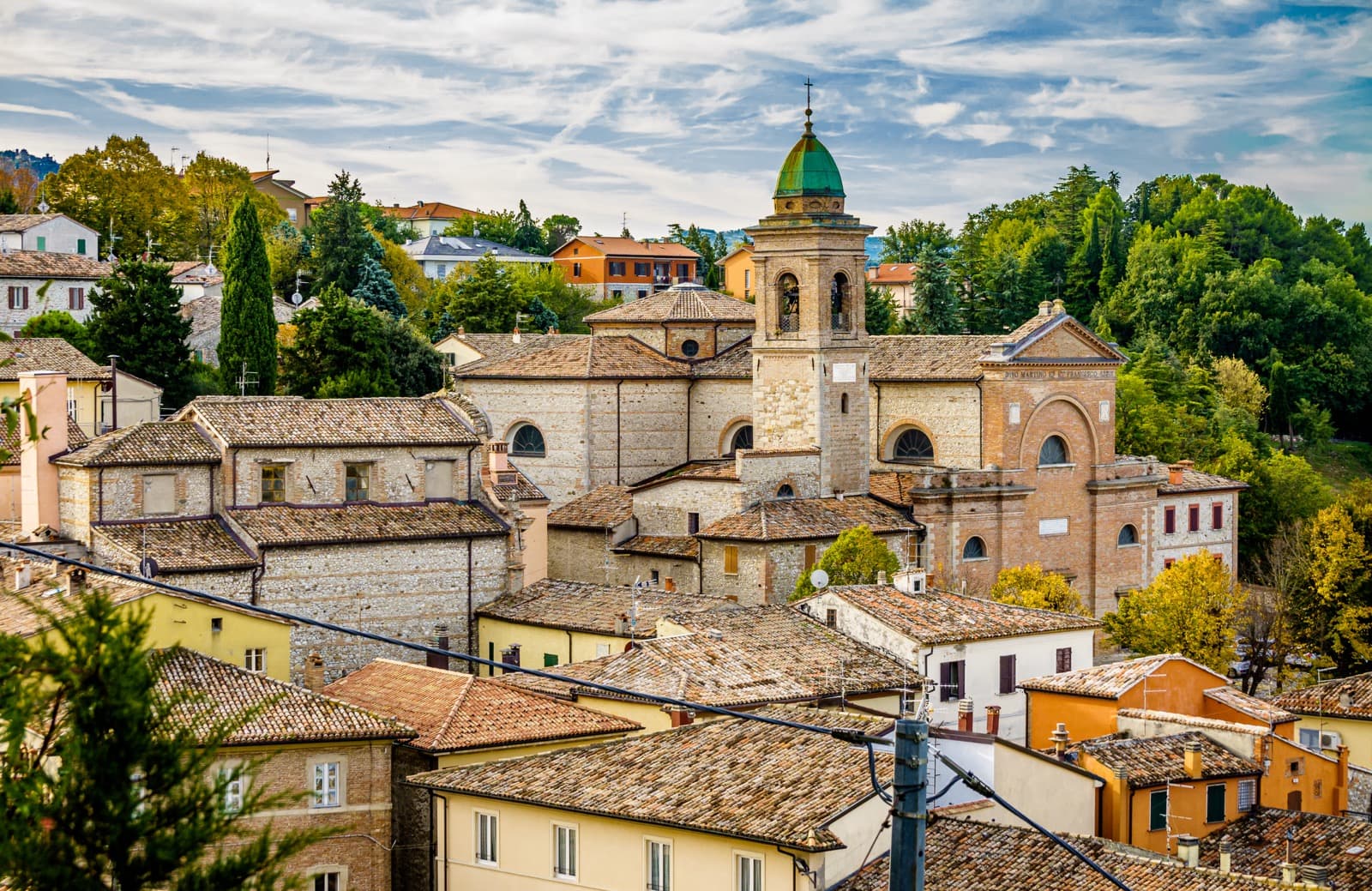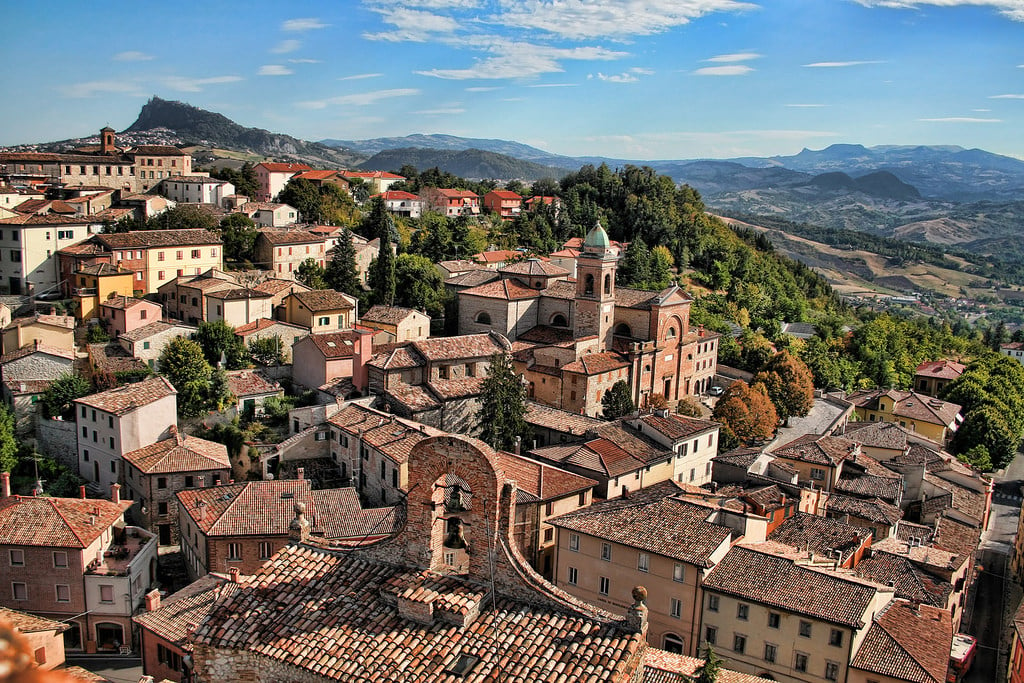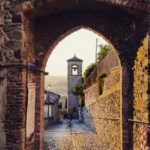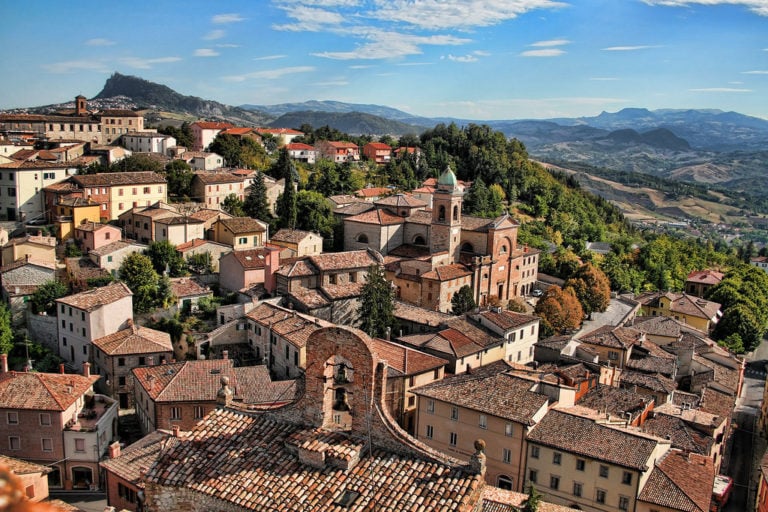Nestled among the hills of Rimini’s hinterland, on the southern part of Emilia Romagna, there is an enchanted valley made of breathtaking landscapes and authentic villages.
It is the Valmarecchia, the Romagna’s Valley drawn from Marecchia River, on the border with Tuscany and Marche: a lush area, with green hills dotted by villages, towers, and castles.
Today we take you for a road-trip among some of its most beautiful hamlets, an itinerary to discover the best of this territory.
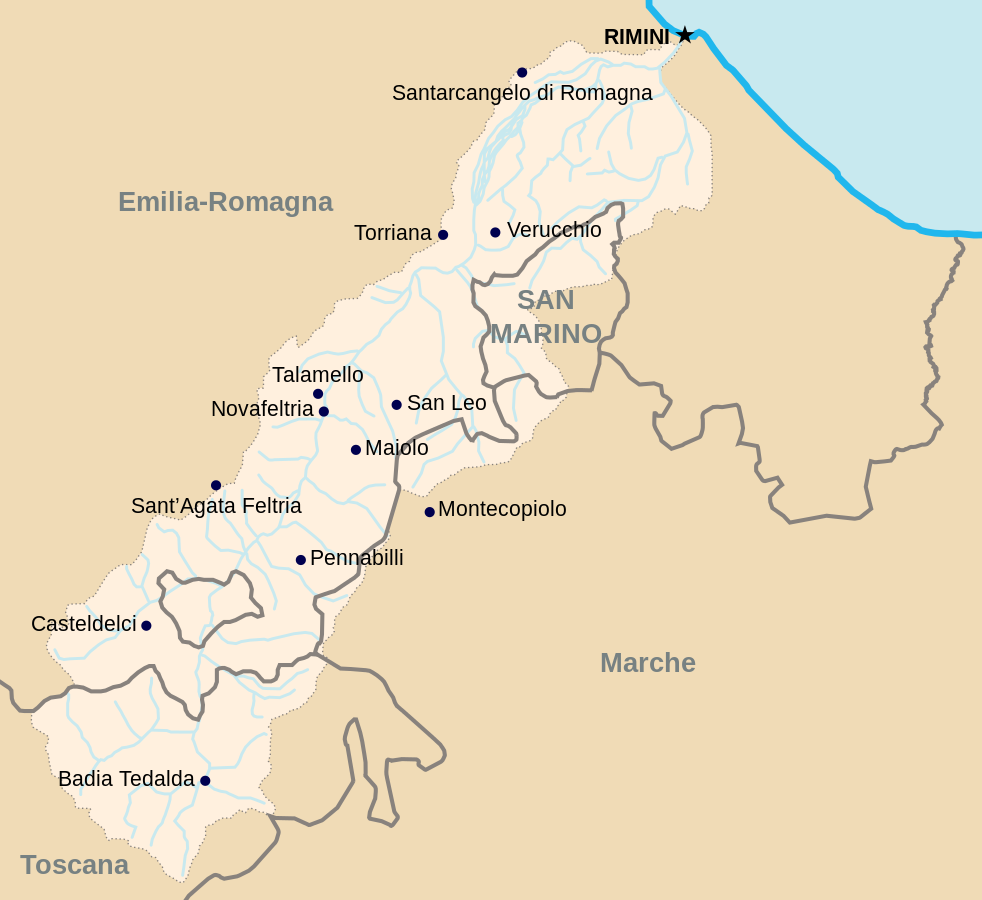
Pennabilli
We start from High Valmarecchia, from Pennabilli, a perfectly preserved medieval village on the western slopes of Carpegna Mount. Built on the rocky outcrops of Rupe and Roccione, its urban layout is composed of the union of the two castles of Billi (on Rupe) and Penna (above Roccione).
This scenic village, which is also Orange Flag of Italian Touring Club, is considered the religious capital of Montefeltro area for being the seat of the Diocese since 1572, a position that has bequeathed to the town several monuments: the Cathedral, the Madonna Delle Grazie Shrine, the Augustinian Convent.
But Pennabilli is also one of the favorite places of the poet Tonino Guerra so that today it has become a real “Spread Museum” dedicated to the Abodes of the Soul. Finally, Pennabilli is a good starting point for discovering the Sasso Simone and Simoncello Park. For specific tourist information, please contact the IAT.
Sant’Agata Feltria
In half an hour from Pennabilli, we reach Sant’Agata Feltria, one of the most characteristic medieval villages of the Montefeltro area, thanks to its castle that seems to come out from a fairytale.
The historical events that affected the country and the lordships occurred over time have left in Sant’Agata a huge artistic and cultural heritage, in which stand the Rocca Fregoso, the Mariani Theatre (the oldest theater entirely made of wood existing in Italy), and the Convent of San Girolamo.
Do not miss nearby the small fortified village of Petrella Guidi, characterized by towering ancient white stone houses joined together in an irregular series. From the top of the tower’s walls you can admire a landscape of rare beauty, from the Adriatic Sea to the Tuscan mountains: seeing is believing!
Sant'Agata Feltria (RN) | Credit: Daniela Laudando
Sant'Agata Feltria (RN) | Credit: Luigi v1966
Sant'Agata Feltria (RN) | Credit: mile_di87
San Leo
We take again the car and in about 40 minutes we arrive in San Leo, one of the “Most Beautiful Villages in Italy” and Orange Flag of Italian Touring Club. This scenic village, the historic heart of Montefeltro and the town that gave it the name, stands on a huge boulder insurmountable save for a single road cut into the rock.
On the highest part of the spur rises the impregnable Fortress, famous for hosting the imprisonment of alchemist Cagliostro. Among other important historical figures who spent some time in San Leo, we should remember Dante, who also mentioned the town in his Divine Comedy, and St. Francis of Assisi, who received here the gift of Monte Della Verna.
In addition to the Fortress, which offers a special view from the hills to the sea, San Leo boasts a perfectly preserved architectural heritage, including the Pre-Romanesque Parish and the Romanesque Cathedral.
Do not miss nearby the Piero Della Francesca Balconies: two panoramic points from where we can admire the landscapes represented in the masterpieces of the great painter found thanks to the project Montefeltro Renaissance Views. For more information, here’s how to contact the IAT.
San Leo (RN) Ph. tokarvia shutterstock
Fortezza di San Leo Ph. Carlo Grifone
San Leo (RN), Veduta del borgo | Credit: Cristian Ghisla, via Shutterstock
Verucchio
The last stop on our itinerary, a half-hour drive from San Leo, is Verucchio, an ancient village that, with its Malatesta Fortress, dominates the Lower Valmarecchia. Orange Flag of Italian Touring Club, this scenic village nestled on the first rocky hills a short distance from the sea was the Malatesta Capital and just in its mighty fortress, the Malatesta Family gave a start to their prestigious history.
Here lived, in fact, Mastin Vecchio, the Centenary Malatesta, considered one of the founders of the family, mentioned by Dante in his Divine Comedy. This is why, traditionally, Verucchio is called the “Cradle of the Malatesta”.
The medieval structure, that a walk in the historic center highlights, confirms how much this important family gave to the growth of this place that, in the following centuries, has enjoyed progress and prosperity, today foundation of its cultural vocation. All information at the IAT.
Verucchio (RN) Ph. FooTToo via shutterstock
Verucchio (RN) | Credit: Rebecca Massari
Verucchio (RN) | Credit: Apt Servizi
Author
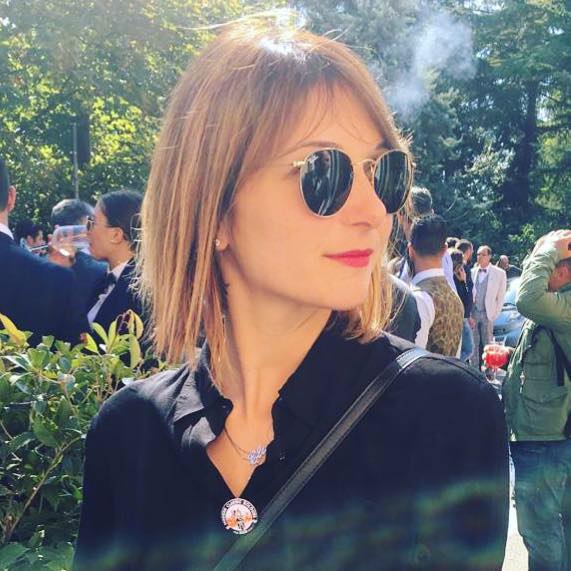
Elisa Mazzini
Social Media Manager for @inEmiliaRomagna and full-time mom.
You may also like
The most beautiful Italian Villages in Emilia-Romagna
by Elisa Mazzini /// November 26, 2024
Discover Emilia Romagna from above – On top of Towers and Bell towers
by Elisa Mazzini /// October 24, 2018
8 unmissable Castles in the lands of Guidi and Malatesta
by Walter Manni /// April 13, 2018

Interested in our newsletter?
Every first of the month, an email (in Italian) with selected contents and upcoming events.
The village of Verucchio: from the Etruscans to the Malatesta Family
by Arturo Castellini /// October 12, 2017

